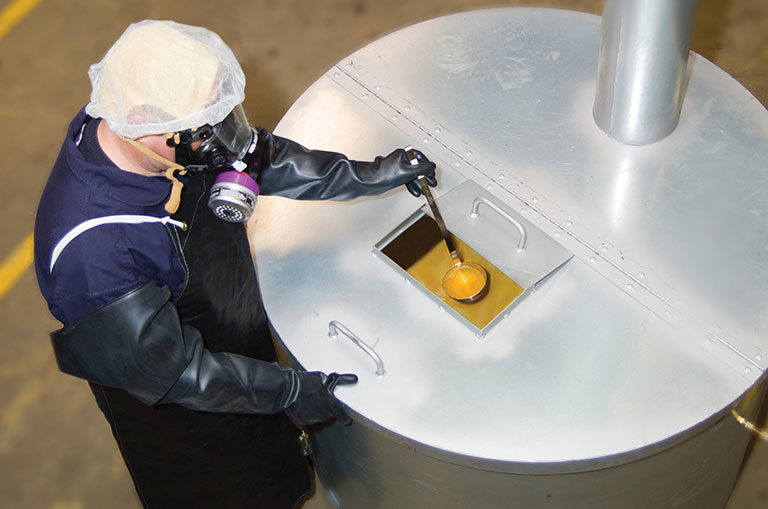NIOSH issues recommended exposure limits for chemicals linked to ‘popcorn lung’

Photo: NIOSH
Washington – NIOSH has released recommended limits for controlling occupational exposure to flavoring chemicals diacetyl and 2,3-pentanedione, both of which have been linked to reduced lung function in food flavoring and production industry workers.
Published Oct. 31, Criteria for a Recommended Standard: Occupational Exposure to Diacetyl and 2,3-Pentanedione lists the recommended exposure limits for diacetyl at 5 parts per billion and 9.3 ppb for 2,3-pentanedione as an 8-hour time-weighted average during a 40-hour workweek. NIOSH stated that the limit for 2,3-pentanedione is higher because of “analytical method limitations.” For short-term exposures, the REL is 25 ppb for diacetyl and 31 ppb for 2,3-pentanedione in a 15-minute time span.
The RELs, which align with draft exposure limits NIOSH issued in 2011, are intended to lower the risk of bronchiolitis obliterans – an irreversible lung disease linked to occupational exposure to the chemicals. The disease, also known as “popcorn lung,” was identified among some workers at microwave popcorn packaging plants in the 2000s.
“We know these flavoring compounds can pose a great risk for workers who may be exposed on the job, causing serious and irreversible damage to their lungs,” NIOSH Director John Howard said in a press release. “This Criteria Document reflects not only our review of the science and understanding of the hazard, but also outlines our recommendations for controlling workplace exposures to these compounds.”
Post a comment to this article
Safety+Health welcomes comments that promote respectful dialogue. Please stay on topic. Comments that contain personal attacks, profanity or abusive language – or those aggressively promoting products or services – will be removed. We reserve the right to determine which comments violate our comment policy. (Anonymous comments are welcome; merely skip the “name” field in the comment box. An email address is required but will not be included with your comment.)

